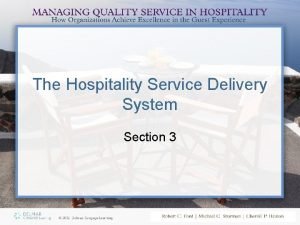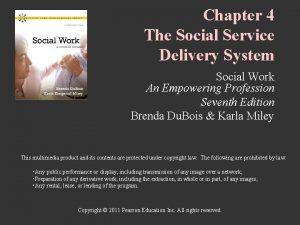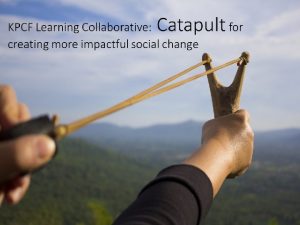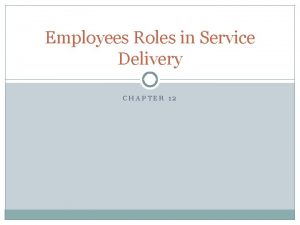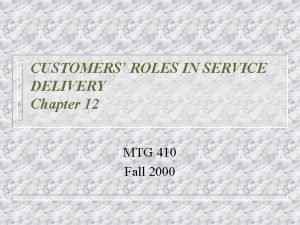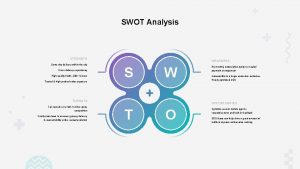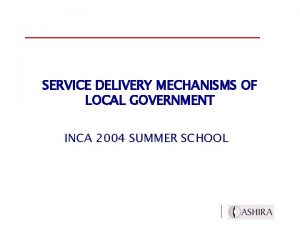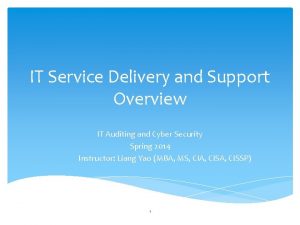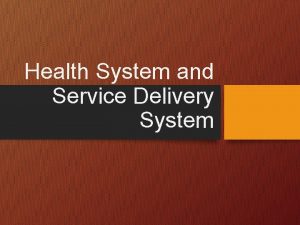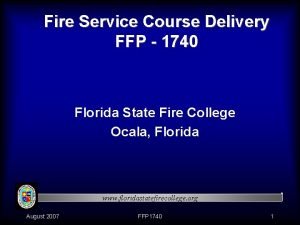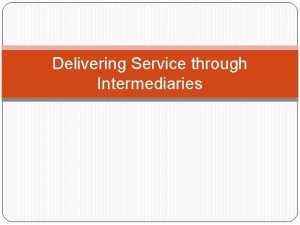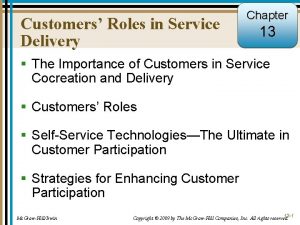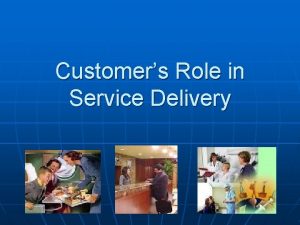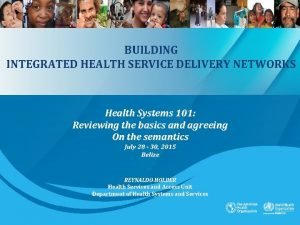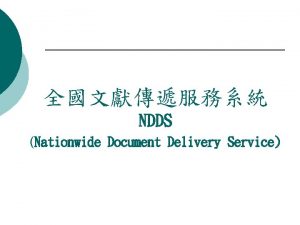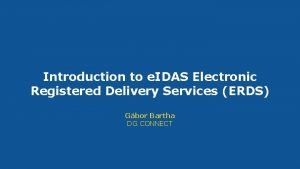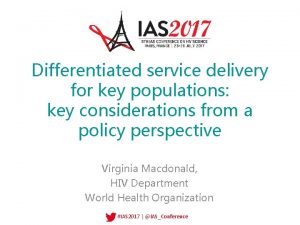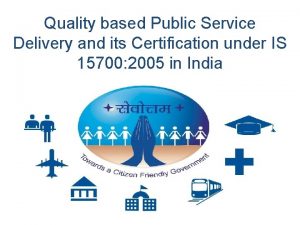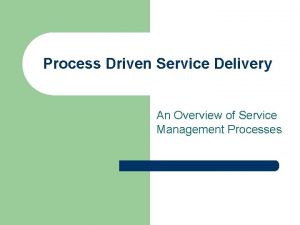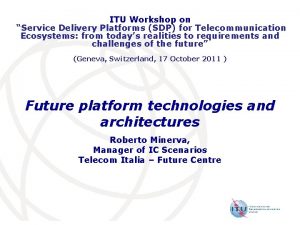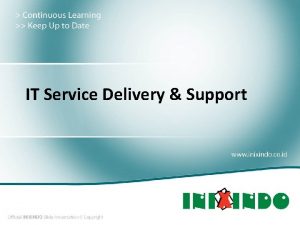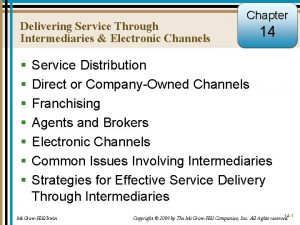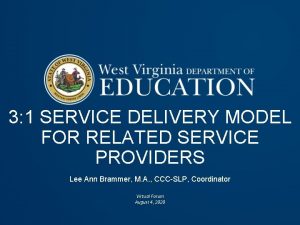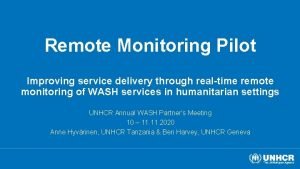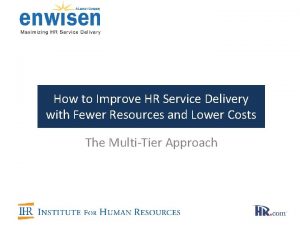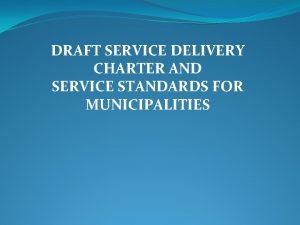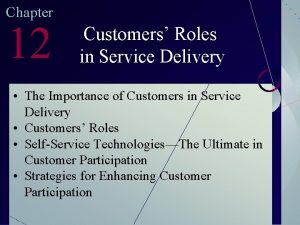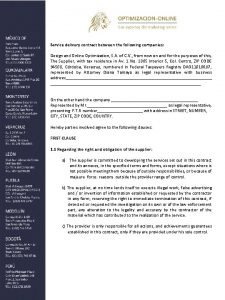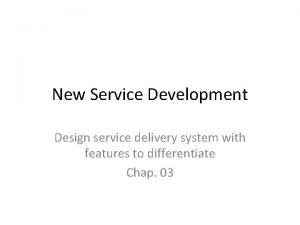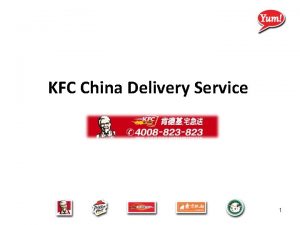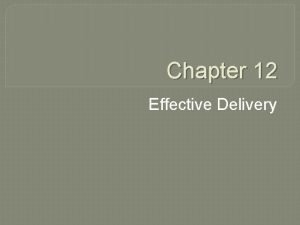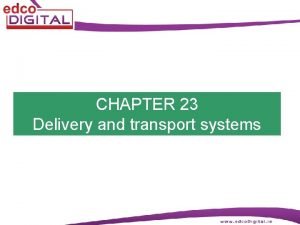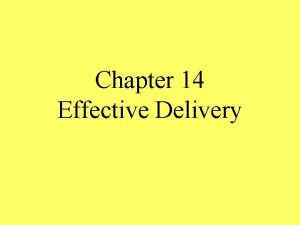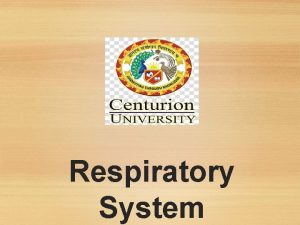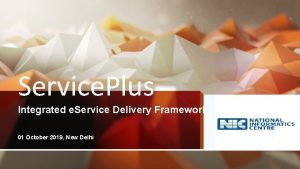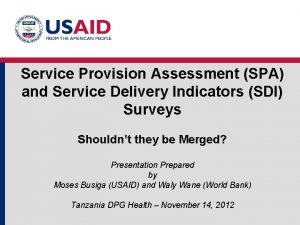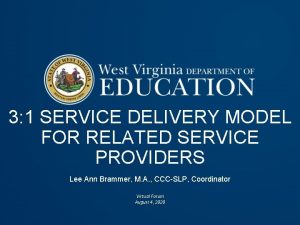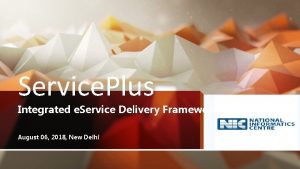Planning the Service Delivery System Chapter 10 Planning
































- Slides: 32

Planning the Service Delivery System Chapter 10

Planning and Designing the Service Delivery System • Check system first – Short-sheeted • Trying to save money, ties up elevators – Increases guest dissatisfaction – Increases room-service costs – Increases housekeeping labor

Planning and Designing the Service Delivery System – Lessons learned • Managers can’t solve all problems alone • Employees a good source for solutions • Perspective of entire delivery system needed for effective solution

Planning and Designing the Service Delivery System • Delivery system – Service product – meets guests’ needs – Service setting – well-designed environment – Service delivery – well-trained, motivated • Must think about entire process for flawless execution

Planning and Designing the Service Delivery System • TQM – Consideration of entire system • Initial design to finished product – Everyone responsible for delivering quality – Check system before blaming people • May be flaw in system

Planning and Designing the Service Delivery System • Designing and checking – Goal • Fail no guest – Guest is always ultimate judge – Delight every guest and design from their perspective

Planning and Designing the Service Delivery System • Some guiding principles – Study your customers – Build delivery system that they expect – Monitor system closely – Early-warning to detect possible failure – Follow-up if not meeting guest expectations

DEVELOPING THE SERVICE DELIVERY SYSTEM

Developing the Service Delivery System • Juran Trilogy – Quality planning • Identify customer, identify needs, create product/service, deliver – Quality control • Deliver in most effective way – Quality improvement • Analysis and improvement/elimination of errors

Influence of the Juran Trilogy Phase III Planning the Service Delivery System Monitoring the Service Experience Assessing the Experience to Improve the System When Before guest arrives and while waiting During guest’s experience After guest’s experience What Experience expected Experience realized Experience remembered Who Target customers Actual customers Past, current, and potential future customers Setting service standards, blueprinting, universal service map, etc. Applying service standards and job performance standards, MBWA, etc. Guest Assessment: comment cards, surveys, 800 numbers, etc. How

Service Delivery System • Planning the system – Juran I – Analysis and detail of every step • The difference in achieving excellence • Service standards – SMART • Specific, measurable, attainable, resultsoriented, time specific

Service Delivery System • Monitoring service experience – Juran II – As service is occurring – Measurement is crucial – What is important to success? • Assessing experience and improving the system – Juran III

Service Delivery System • Blurred lines – Phases of delivery overlap • Self-healing system – Empowerment – everyone is responsible • Cycle goes on

Service Delivery System Planning Assessing/Improving Monitoring

PLANNING TECHNIQUES

Blueprinting • Defines every component of entire guest experience • Five parts: 1. Physical evidence – tangible that impacts guest assessment of quality and value 2. Customer actions – drives the blueprint process 3. Onstage/visible contact-employee actions – what’s happening face-to-face

Blueprinting • Five parts: 4. Backstage/invisible contact-employee actions – what’s happening out of sight 5. Support processes – essential support services • Adding detail

Universal Service Map • Lines of implementation and internal interaction – Line of internal interaction • Must occur inside the organization – Line of visibility • What guest can and cannot see • What the employee does – Line of guest interaction • Customer becomes co-producer

Fishbone Analysis • Fishbone diagram • Resource categories – Equipment, personnel, procedures, support, other • Pareto analysis – Problem causes based upon frequency • Airport data – No more waiting

PERT/CPM (Program Evaluation Review Technique/Critical Path Method) • Definition • Diagrams • Circles and arrows (continued)

PERT/CPM • Building the network – Step 1: Activity-event analysis • Define all events and all activities leading up to them for project to be completed – Step 2: Activity-event sequencing – Step 3: Activity time estimates • Expected time = (optimistic time + 4 x most likely time + pessimistic time) ÷ 6

PERT/CPM – Step 4: Diagramming the project • Putting it all together – Step 5: Identifying the critical path • No slack time activities – crucial to completion

PERT/CPM • Big PERT/CPM picture – Visual of what is involved for completion – Revision of schedule quick and easy • Potential disadvantages – Assumes activities for completion are independent – Dependent upon accurate time estimates

Simulation • Imitation of the real thing • Epcot – Patterns of guest behaviors modeled – Refined and adjusted after opening • The Odyssey Restaurant – Inconvenient location unable relocate prior to opening • Computer simulation for all

TARGETING SPECIFIC PROBLEM AREAS IN SERVICE DELIVERY SYSTEMS

Targeting Specific Problem Areas In Service Delivery Systems • Planning process designed to make something good happen – WOW!

To Prevent Problems • Demand forecasting • Training • Quality teams

Poka-Yokes (POH-kah YOH-kay) • Mistake proofing or avoiding mistakes – Proactive or preventative strategy • Types of inspections: – Source • Fixed before in delivery system – Self • Checking own work – Successive • Next in line checks previous work

Poka-Yokes • Warnings and controls – Contact • Do physical characteristics meet specs? – Fixed values • Ensuring step executed same way every time – Motion step • Sequence of steps executed correctly

Poka-Yokes • For customers – Drive through errors solved • Order confirmation unit – Signal customer to do right thing involved in co-production • Speed parking – ala Disney • Improvement is time list kept by attendant

Cross-Function Project and Matrix Organizations • Silos eliminated • Teamwork and flow of ideas enhanced

Cross-Function Project and Matrix Organizations • Cross-functional structure – E. g. , Ritz-Carlton • Advantages and disadvantages • Every unit and every person focus – Guest needs – Guest wants – Guest expectations
 Service delivery system in hospitality industry
Service delivery system in hospitality industry Social service delivery system
Social service delivery system Social work service delivery models
Social work service delivery models Employees role in service delivery
Employees role in service delivery Customer roles in service delivery
Customer roles in service delivery Accenture delivery suite website link
Accenture delivery suite website link Courier swot analysis
Courier swot analysis Internal and external service delivery mechanisms
Internal and external service delivery mechanisms It service delivery and support
It service delivery and support It service delivery objectives
It service delivery objectives Fire service course delivery
Fire service course delivery Effective service delivery
Effective service delivery Role of intermediaries in service delivery
Role of intermediaries in service delivery Customer role in service delivery example
Customer role in service delivery example Customer role in service delivery
Customer role in service delivery Health service delivery network
Health service delivery network National wide document delivery services
National wide document delivery services Electronic registered delivery service
Electronic registered delivery service Differentiated service delivery
Differentiated service delivery Service delivery certification
Service delivery certification Service delivery management definition
Service delivery management definition Dave's satellite communications
Dave's satellite communications Telecoms service delivery platform
Telecoms service delivery platform Service delivery manager itil definition
Service delivery manager itil definition Electronic channels of distribution
Electronic channels of distribution Push-in service delivery model
Push-in service delivery model Remote service delivery
Remote service delivery Hr tiered service delivery model
Hr tiered service delivery model Role of employees in service delivery
Role of employees in service delivery Service delivery charter for schools
Service delivery charter for schools Customers role in service delivery
Customers role in service delivery Service delivery consultation
Service delivery consultation Service delivery contract
Service delivery contract
